
Colonel Charles Wyndham was born in 1796, the 5th child and 3rd son of George O’Brien Wyndham, 3rd Earl of Egremont and Elizabeth Ilive. The first four children were born illegitimately, before the Earl married Miss Ilive in 1801, so Charles and his brothers Henry and George were illegitimate.
He married Hon.Elizabeth Anne Hepburne-Scott, daughter of Hugh Hepburne-Scott, 6th Lord Polwarth and Harriet Brühl, on 3 October 1835.
Charles Wyndham joined the Army by purchasing his commission as a Cornet in the 10th (Prince of Wales’s Own) Regiment of (Light) Dragoons (Hussars) on the 13th May 1813. A Cornet was originally the lowest grade of commissioned officer in a British cavalry troop. The rank was abolished along with the purchase of commissions in the Army Reform Act of 1871 when it was replaced by Second Lieutenant.
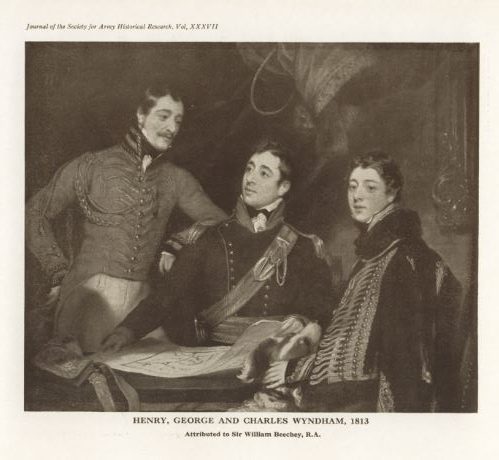
The painting of the three brothers is by Sir William Beechey. Henry Wyndham is depicted standing on the left wearing the uniform of Aide de Campe to the Commander in Chief. The central figure is George Wyndham wearing a blue light dragoon uniform and the figure on the right is Charles Wyndham wearing a hussars uniform .
In 1813, having landed once more in Spain, the 10th Hussars fought at the Battle of Morales in June 1813. During the battle, the regiment destroyed the 16th French Dragoons between Toro and Zamora, taking around 260 prisoners. Later in the month, the Regiment also fought at the Battle of Vitoria while still in Spain and then, having advanced into France, fought at the Battle of Orthez in February 1814 and the Battle of Toulouse in April 1814.
As a Cornet, he saw action in the Peninsular War with the army in Portugal, Spain, and France, being present at the battles of Vitoria, Orthez and Toulouse.
The Battle of Vitoria took place on 21st Jun 1813 where a combined British, Portuguese and Spanish army under General the Marquess of Wellington broke the French army under King Joseph Bonaparte and Marshal Jean-Baptiste Jourdan near Vitoria in Spain, eventually leading to victory in the Peninsular War.
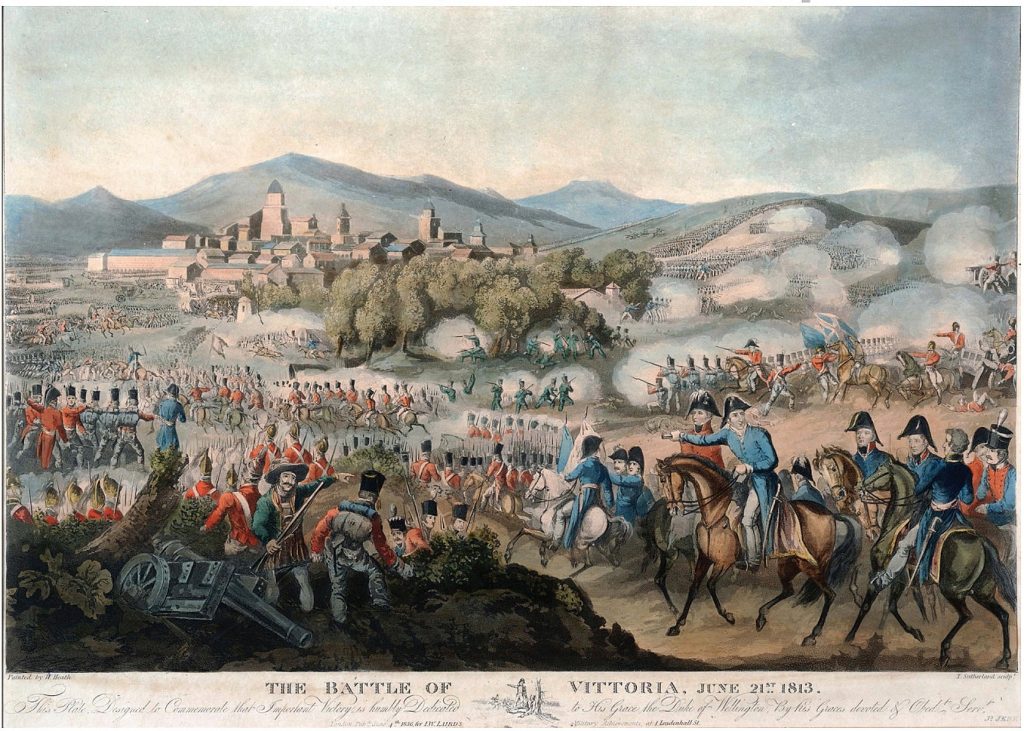
The Battle of Orthez was on the 27th Feb 1814 and saw the Anglo-Portuguese Army under Field Marshal Arthur Wellesley, Marquess of Wellington attack an Imperial French army led by Marshal Nicolas Soult in southern France. The outnumbered French repelled several Allied assaults on their right flank, but their center and left flank were overcome, and Soult was compelled to retreat. At first the withdrawal was conducted in good order, but it eventually ended in a scramble for safety and many French soldiers became prisoners. The engagement occurred near the end of the Peninsular War.
Another Officer from the 10th Hussars who made Melton his home was Lieutenant-Colonel Alexander Charles Craufurd, better kniown as Tea Pot Craufurd. You can read more about him in my blog here. Tea Pot Craufurd.
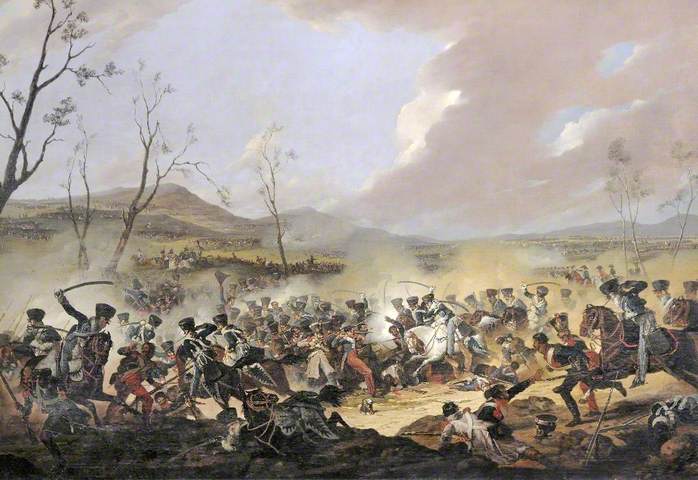
The Battle of Toulouse was one of the final battles of the Napoleonic Wars and took place on 10th Apr 1814, four days after Napoleon’s surrender of the French Empire to the nations of the Sixth Coalition. Having pushed the demoralised and disintegrating French Imperial armies out of Spain in a difficult campaign the previous autumn, the Allied British-Portuguese and Spanish army under the Duke of Wellington pursued the war into southern France in the spring of 1814.
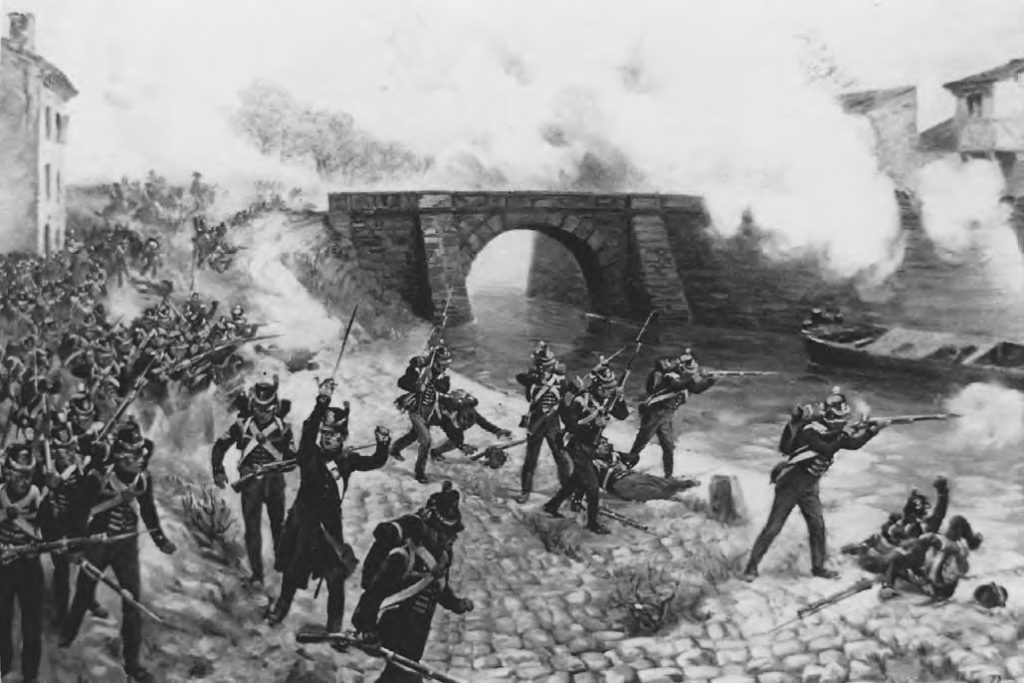
In a skirmish near Toulouse in April 1814, Charles and one trooper were wounded. The regimental history says, ‘A story was told of him, that he was a very good-looking young boy, and in one of the cavalry engagements he was at the mercy of the colonel of a French cavalry regiment, who, instead of cutting him down, lowered his sword, saying, “Allez, petit diable d’Anglais.”’
Following his service in the Peninsular War he was promoted to Lieutenant on the 4th May 1815 and served in the Battle of Waterloo as part of the 2nd (Royal North British) Regiment of Dragoons (Scots Greys) No 2 Troop, commanded by Captain Edward Payne. During this conflict he was injured, being shot twice, once in the foot, but refused to be returned on the list of wounded. It was during this battle that Sergeant Charles Ewart captured the Eagle and Standard of the 45th French Infantry Regiment on the 18th Jun 1815.
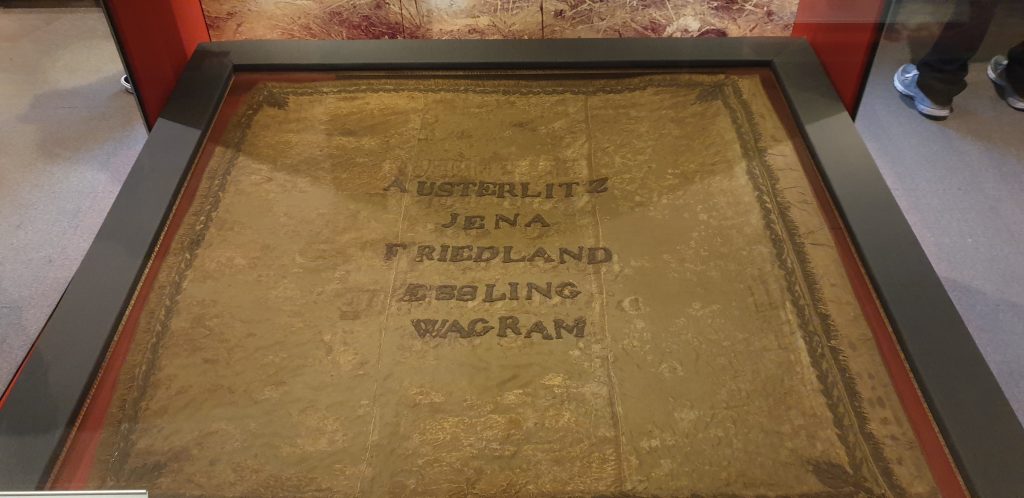
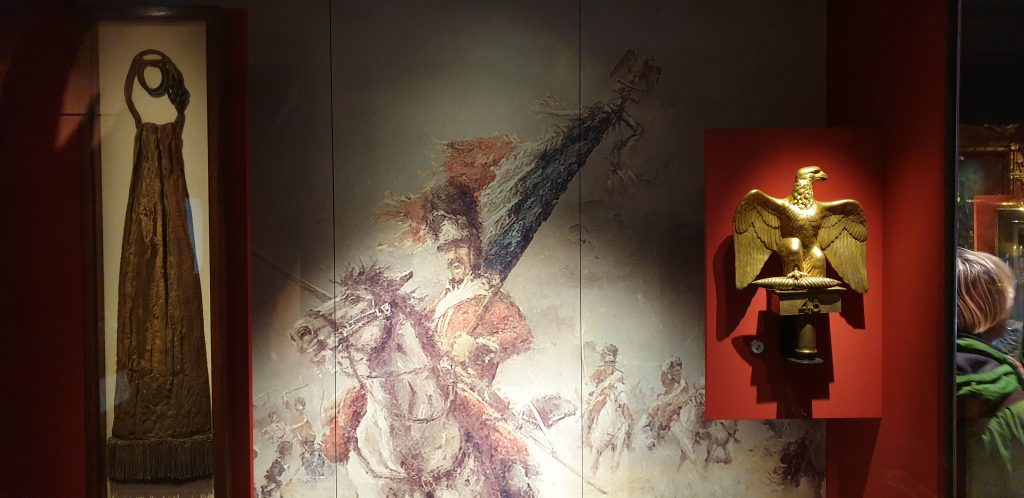
During the Battle of Waterloo, the Greys lost 102 men killed and 97 wounded. No.2 Troop had a nominal strength of 77 but perhaps 15 or more of these would have been at the rear with baggage etc. with the Troop losing 22 men in the battle.
Following Waterloo, The Greys marched to Harfleur in October 1815 and remained there until the Treaty of Paris had been signed on 20 November. They embarked at Calais and left France on 10 January 1816.
For his service at the Peninsular war and Waterloo he was awarded the Army Gold Medal / Military General Service Medal, 1793-1814 with three clasps for Vittoria, Orthez, and Toulouse and the Waterloo medal 1815.
Apparently, Charles Wyndham was nicknamed – “the handsomest man in the Army” by King George IV.
After The Greys returned home to England, they spent 18 months in Canterbury. In 1817 they went to Edinburgh, then Ireland in July 1818.
On 24th June 1819, Charles was promoted to the rank of Captain and after spending 3 years in Ireland, the Regiment moved back to England in 1821, where, after a spell in the Midlands they attended the coronation of George IV.
Next they returned to Scotland where they were on hand when King George IV visited in 1822. The Regiment moved south by stages in 1823 with various postings from Carlisle to Ipswich. Charles Wyndham was promoted to Major on 12th Dec 1826.
There was another tour of duty in Ireland from 1827 to 1830, then back to southern England. When the Reform Bill was passed by the Commons and the Lords in April 1832, it was scuppered at the committee stage.
This triggered civil unrest and the Greys who were in Birmingham at the time found themselves caught up in the turmoil. Five thousand people had forced their way into the barracks as a prelude to demonstrations and unrest. The cavalry would be needed to tackle the unruly mobs but soldiers began to write letters to the authorities stating that they would not hurt peaceful citizens.
When the politicians lost confidence in the army to keep the peace, the Bill was passed. The Duke of Wellington had a letter published in the Weekly Dispatch denying the army’s reluctance to fight the population but this was refuted by a trooper in the Scots Greys, Alexander Somerville, an articulate private soldier who also had his letter published.
Although the letter was anonymous the officers of the Greys knew who the author was. Somerville was court-martialled and sentenced by the acting CO, Major Charles Wyndham, to 200 lashes of the cat o’nine tails. Somerville’s fame spread and he became a symbol of martyrdom for the rebellious working class.
From the Midlands the Greys were posted to York, and from 1834 -35 were in Scotland. In 1836 they went to Ireland where Charles Wyndham was promoted to Lieutenant-Colonel on 30th Dec 1837 when he took over command of the Scots Greys.
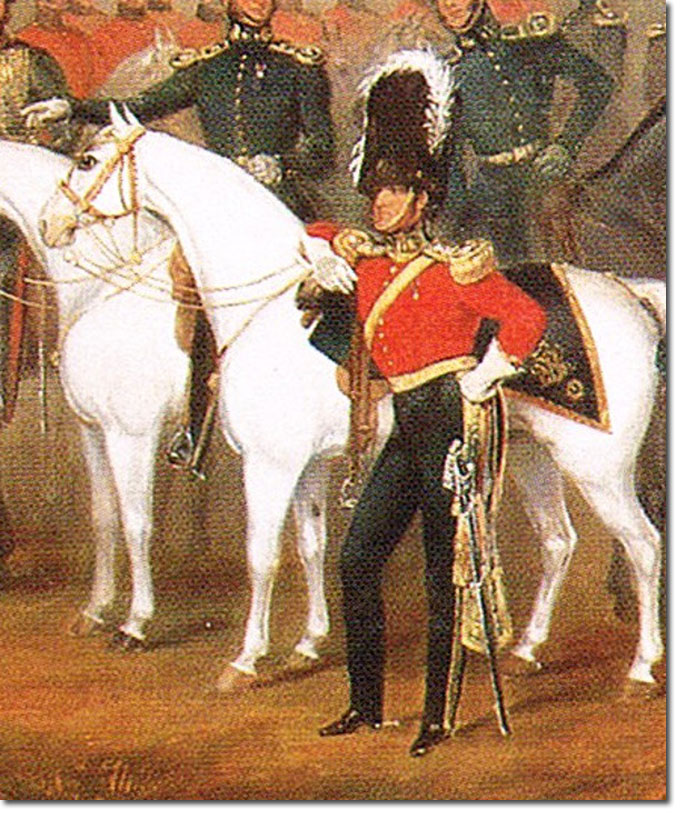
On Friday 29 May 1840, the Dublin Morning Register reported the following “ THE ARMY The head of the Royal Scots Greys, under the Command of Lieutenant Colonel Charles Wyndham, embarked the North Wall, yesterday, for Liverpool, and were relieved by the 6th Dragoon Guards, under the command of Lieutenant Colonel Jackson. They will be quartered in Portobello Barracks.
Colonel Charles Wyndham resigned his commission on 1st April 1841 with the Sussex Advertiser reporting on Monday 12 April 1841 “Lieut.-Colonel Charles Wyndham has retired from the 2d Regt. of Dragoons, and has been succeeded by Major Clarke, whose majority has been purchased by Captain Hobart.”
In 1840, due to his passion in fox hunting, Colonel Charles Wyndham bought Hill House and renamed it Wyndham Lodge.
Hill House, situated on Ankle Hill was the first house built in Melton that was South of the river. The former owner of Hill House was a retired leather dealer, Mr Hind, who leased the property out in 1828 to the Earl and Countess of Chesterfield.
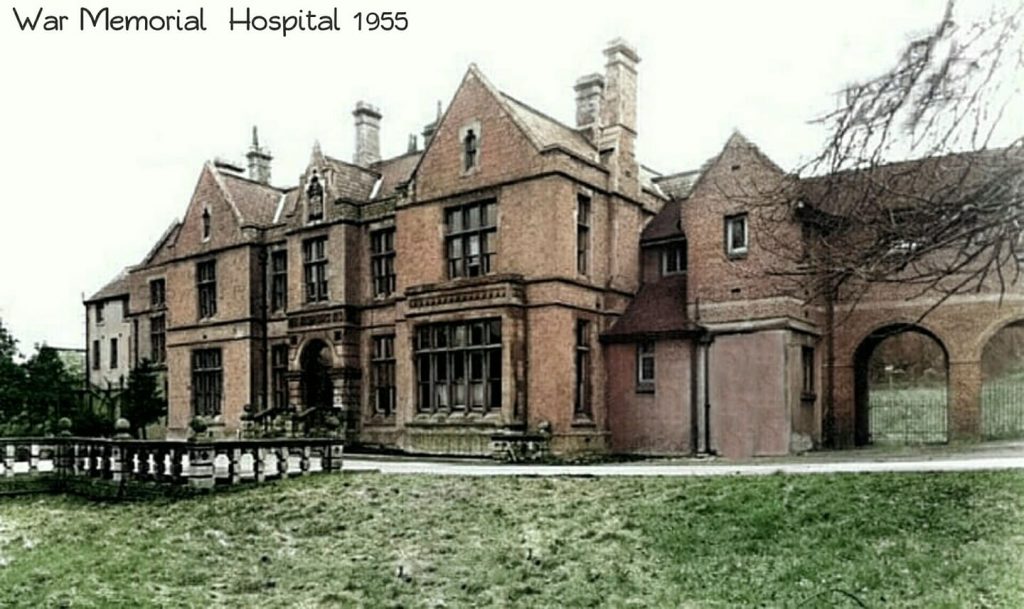
In 1852, the Colonel left Melton due to being appointed as the Master of the Jewel Office at the Tower of London, taking over from the previous incumbent Edmund Lewis Lenthal Swifte who had been in post since 1814.
The Cork Examiner reported on Monday 02 August 1852 “Lieutenant-Colonel Charles Wyndham, formerly of the Scots Greys, has been appointed Keeper of the Crown Jewels in the Tower of London, vice Mr. E. Swift, who retires on full pay.”
The Stamford Mercury published the following article on Friday 09 July 1852 “Colonel Charles Wyndham, of Melton, has just been appointed to lucrative office the Tower of London. The Gallant Colonel has not been a feather-bed soldier, but was present through the Peninsular War, and received severe wound while acting Major in his regiment the Scotch Greys. He has resided at Melton for the last 12 years, and highly respected amongst the gentlemen of the hunt and the inhabitants generally”.
The office holder was responsible for running the Jewel House, which houses the Crown Jewels. This role has, at various points in history, been called Master or Treasurer of the Jewel House, Master or Keeper of the Crown Jewels, Master or Keeper of the Regalia, and Keeper of the Jewel House.
The following article published by the Berkshire Chronicle on Saturday 01 April 1854 makes mention of Colonel Wyndham as Keeper of the Jewels. “A Ghost in the Tower. The Tower of London was thrown into some confusion on Saturday night, owing to the nervousness of a young recruit. About 12 o’clock the sentry posted at the back of the Jewel house was heard screaming in a frightful manner. Colonel Wyndham, the Keeper of the Jewels, jumped out of bed. Other sentries of the guard ran immediately to the assistance of the man, whom they found nearly paralysed with fear and his firelock on the ground. He was immediately relieved and taken to the guard-house, where he gave the following story:—‘That as St. Paul’s clock was striking 12, a figure approached him, whom he instantly challenged, but receiving no answer he challenged a second time, and so it approached nearer and nearer towards him. It grew in size, until he thought it reached the moon.’ The poor fellow got into such a nervous state the sight of the monster, that it was some time before he recovered.”
In September 1852 he was appointed to the position of Deputy Lieutenant for Sussex.
Wyndham retained his position at the Tower until his death on 18th Feb 1866.
The Dublin Evening Mail published the following on Friday 23rd Feb 1866 “Death Colonel Charles Wyndham.—We regret to learn the death of Colonel Charles Wyndham, at his seat Lodge, Sussex. Colonel Wyndham, who had attained his 69th year, was the only surviving brother of Lord Leconfield, and was for a considerable time M.P. for West Sussex. He was well known many years ago in Dublin as officer in the Scots Greys, when that corps was stationed here. He is succeeded in his estates his eldest son Hugh, born in 1836.”
His funeral was held at Petworth Friday 2nd Mar 1866.
Today, the Wyndham name lives on in Melton with a street off Craven Street being named after him – Wyndham Avenue. A new housing estate built on the land of the former lodge is now known as Wyndham Grange.
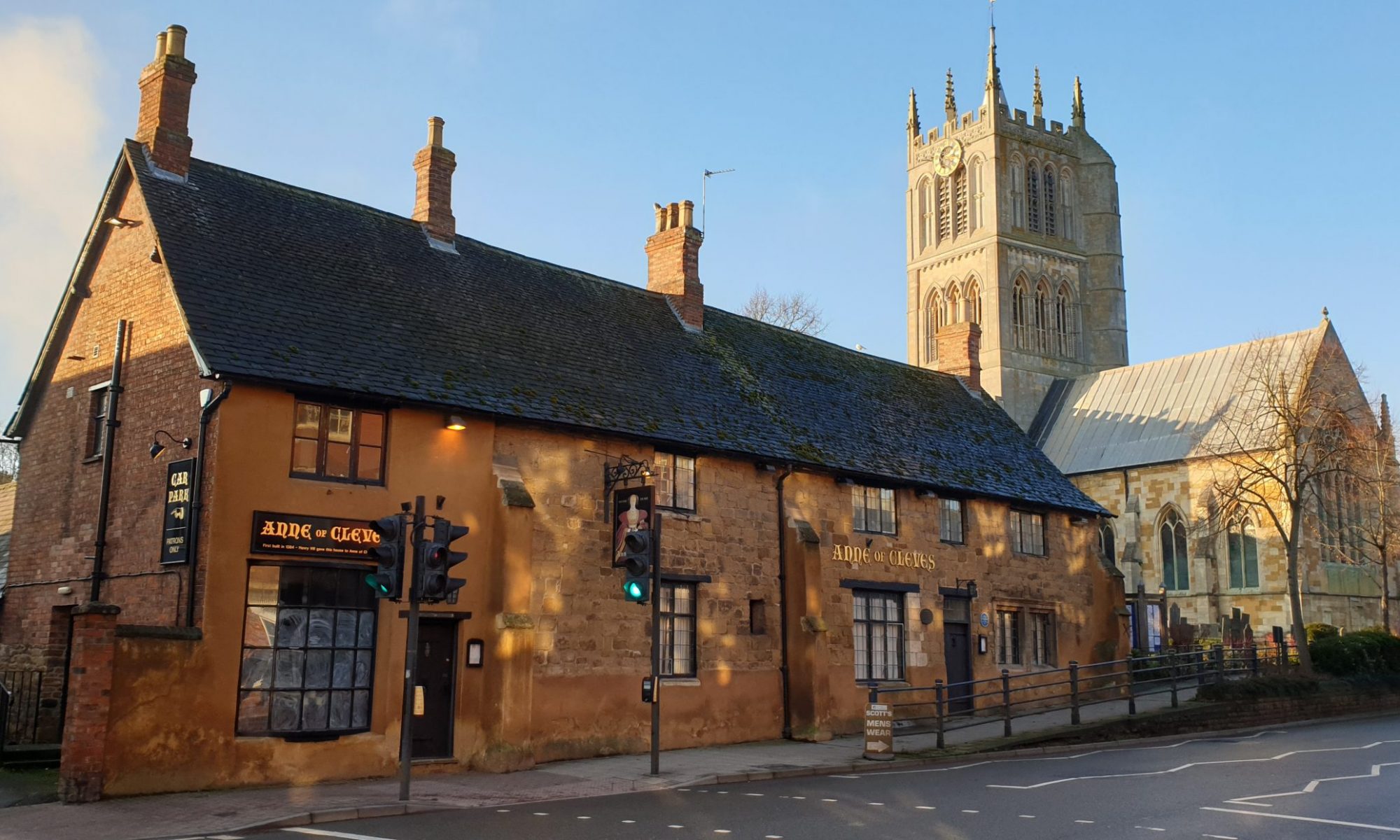
One Reply to “10 – Colonel Charles Wyndham”
Comments are closed.